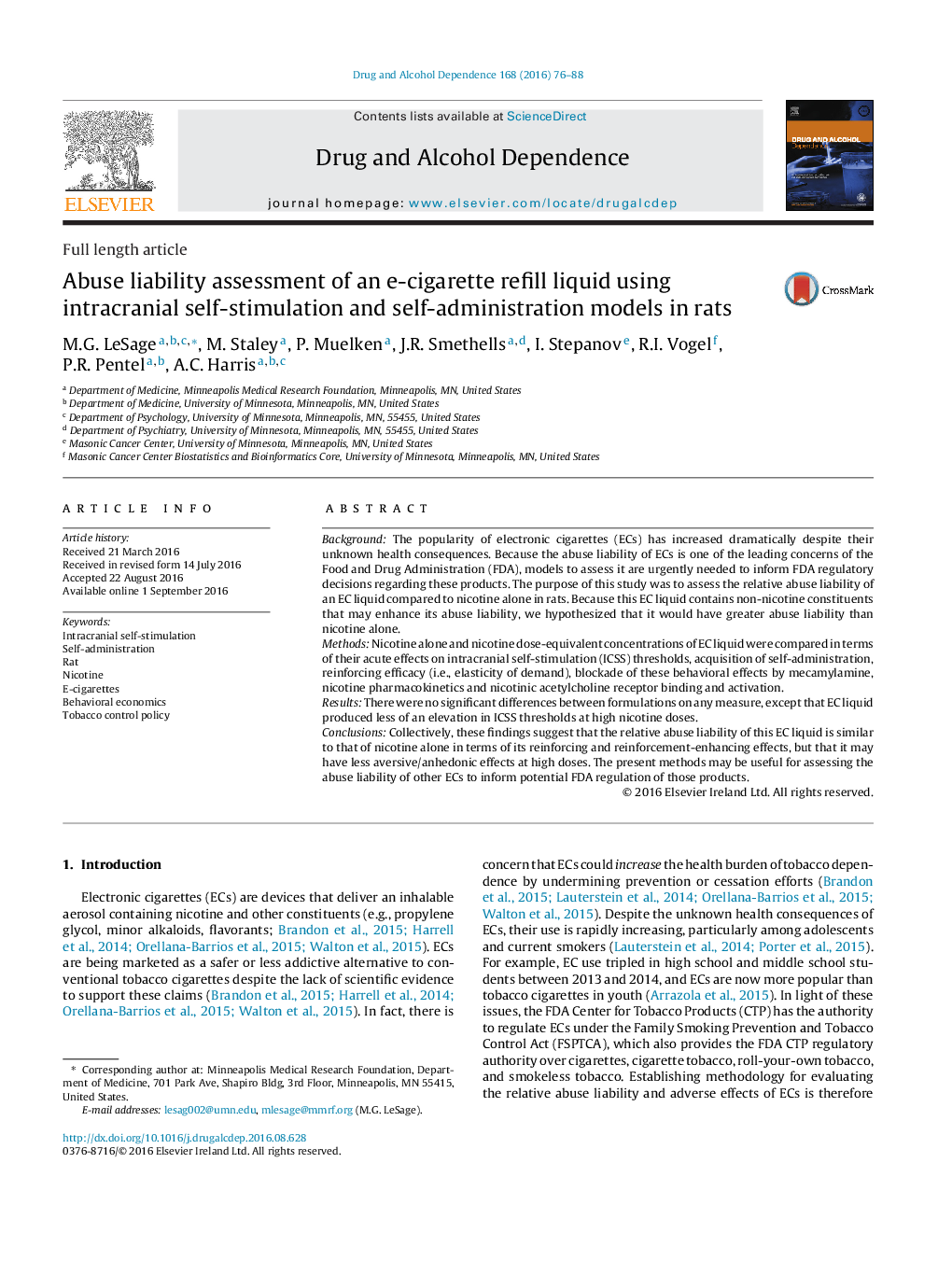| کد مقاله | کد نشریه | سال انتشار | مقاله انگلیسی | نسخه تمام متن |
|---|---|---|---|---|
| 5120451 | 1486123 | 2016 | 13 صفحه PDF | دانلود رایگان |
- Nicotine and electronic cigarette (EC) liquid produced similar decreases in brain reinforcement threshold.
- EC liquid produced less aversion/anhedonia at high nicotine doses.
- Binding and activation of nAChRs were similar between nicotine and EC liquid.
- Nicotine pharmacokinetics were similar between nicotine and EC liquid.
- Nicotine and EC liquid self-administration did not differ in rats.
BackgroundThe popularity of electronic cigarettes (ECs) has increased dramatically despite their unknown health consequences. Because the abuse liability of ECs is one of the leading concerns of the Food and Drug Administration (FDA), models to assess it are urgently needed to inform FDA regulatory decisions regarding these products. The purpose of this study was to assess the relative abuse liability of an EC liquid compared to nicotine alone in rats. Because this EC liquid contains non-nicotine constituents that may enhance its abuse liability, we hypothesized that it would have greater abuse liability than nicotine alone.MethodsNicotine alone and nicotine dose-equivalent concentrations of EC liquid were compared in terms of their acute effects on intracranial self-stimulation (ICSS) thresholds, acquisition of self-administration, reinforcing efficacy (i.e., elasticity of demand), blockade of these behavioral effects by mecamylamine, nicotine pharmacokinetics and nicotinic acetylcholine receptor binding and activation.ResultsThere were no significant differences between formulations on any measure, except that EC liquid produced less of an elevation in ICSS thresholds at high nicotine doses.ConclusionsCollectively, these findings suggest that the relative abuse liability of this EC liquid is similar to that of nicotine alone in terms of its reinforcing and reinforcement-enhancing effects, but that it may have less aversive/anhedonic effects at high doses. The present methods may be useful for assessing the abuse liability of other ECs to inform potential FDA regulation of those products.
Journal: Drug and Alcohol Dependence - Volume 168, 1 November 2016, Pages 76-88
